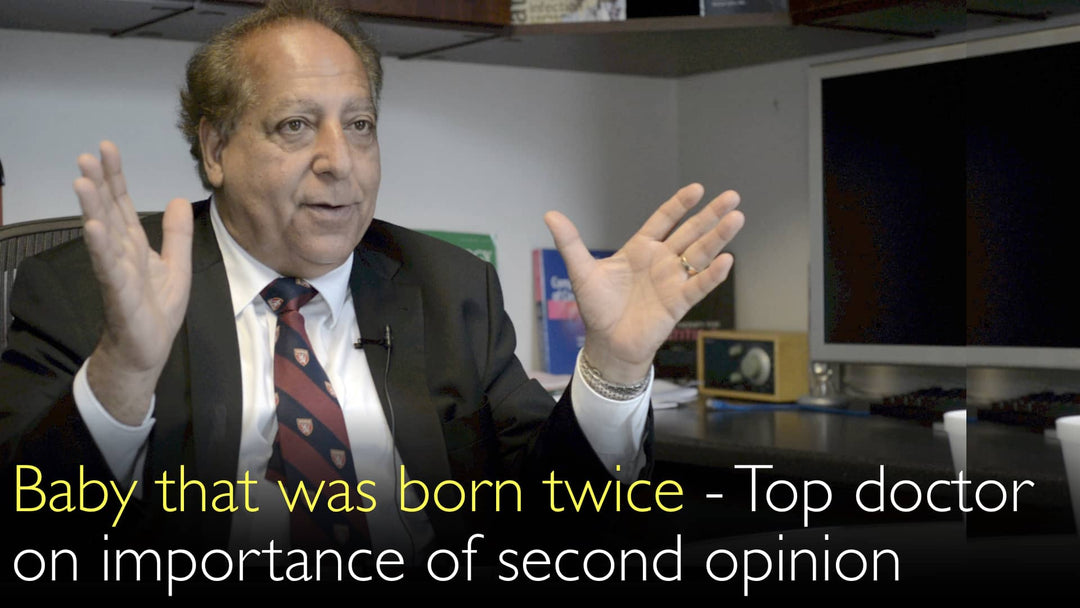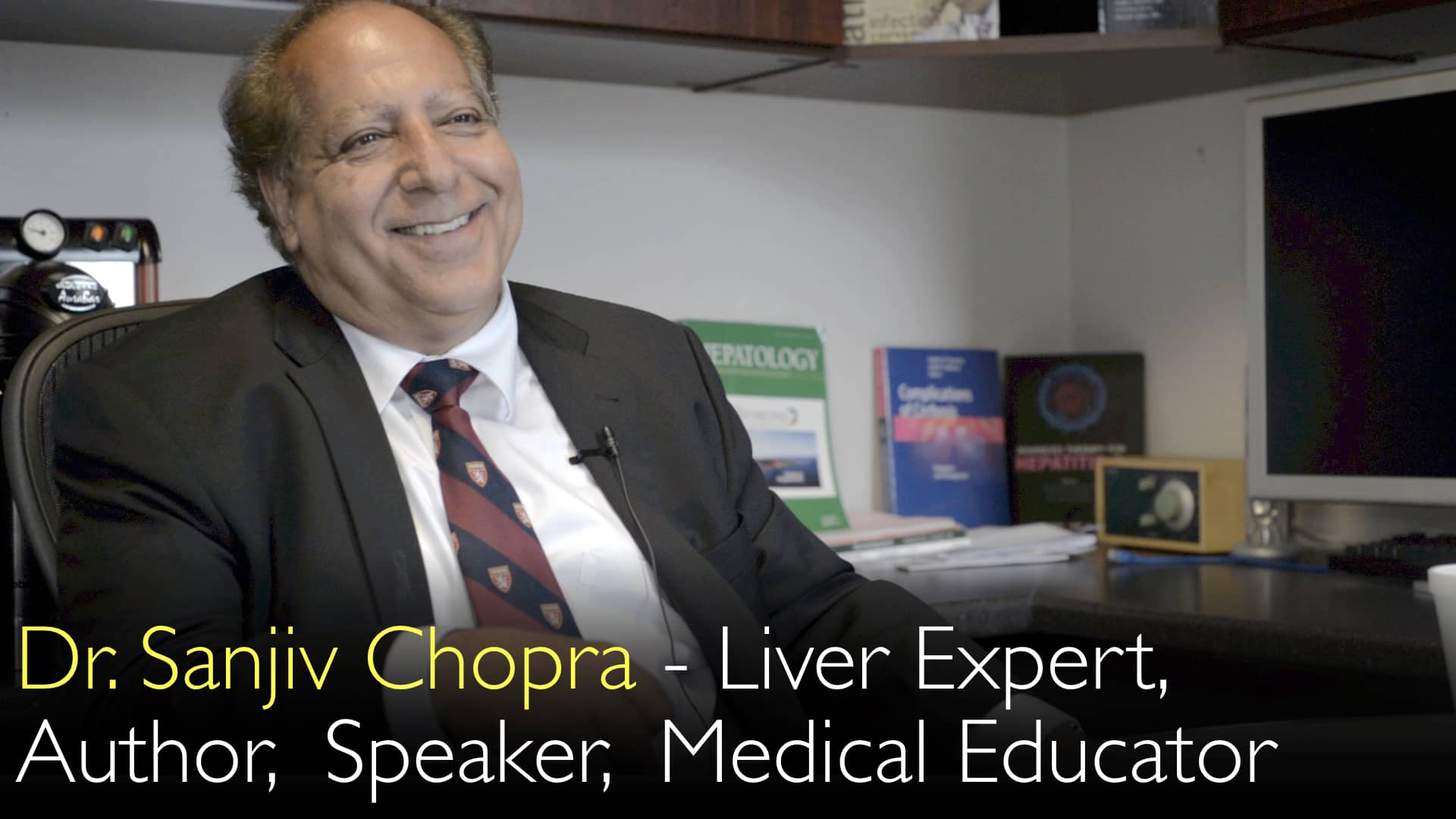Lääketieteellisen koulutuksen ja potilaskokemuksen johtava asiantuntija, lääketieteen tohtori Sanjiv Chopra, korostaa toisen lääkärinlausunnon ratkaisevaa merkitystä esittelemällä merkittävän sikiöleikkauksen tapauksen, jossa poistettiin sakrokokkygeaalinen teratooma. Tämä tarina osoittaa, miten asiantuntijan osaaminen ja rohkeus voivat saavuttaa lääketieteellisiä ihmeitä tilanteissa, joissa alkuperäiset diagnoosit eivät enää tarjonneet toivoa.
Sikiöleikkaus ja toinen mielipide: Pelastava ihme nykylääketieteessä
Hyppää osioon
- Alkuperäinen diagnoosi: Tuhoisa ennuste
- Toisen mielipiteen haku: Uusi tie toivoon
- Uraauurtava sikiöleikkausmenettely
- Ihmeellinen lopputulos: Kahdesti syntynyt vauva
- Vaikutus lääketieteelliseen yhteisöön
- Inhimillinen tekijä lääketieteessä
- Oikeiden asiantuntijoiden luottamuksen tärkeys
Alkuperäinen diagnoosi: Tuhoisa ennuste
Lääketieteen tohtori Sanjiv Chopra kertoo vaikuttavan tarinan, joka alkoi rutiininomaisella 12. raskausviikon ultraäänitarkastuksella. Ultraääniteknikon epätavallinen hiljaisuus oli ensimmäinen merkki siitä, että jotakin oli pahasti vialla. Synnytyslääkäri antoi tuhoisan ennusteen: sikiöllä oli massiivinen sakrokokkygeaalinen teratooma, hyvänlaatuinen kasvain häntäluun kohdalla, joka oli koko sikiön kokoinen. Kasvain imi puolet vauvan verenkierrosta, pakottaen sydämen työskentelemään kaksinkertaisella teholla. Lääkärit ennustivat sydämen pettävän ja suosittelivat raskauden keskeytystä.
Toisen mielipiteen haku: Uusi tie toivoon
Vanhemmat, jotka kohtasivat ylivoimaisen päätöksen, päättivät hakea toista mielipidettä. Ratkaiseva askel johdatti heidät Texasin yliopiston sikiökeskuksen sikiökirurgian asiantuntijan luo. Erikoislääkäri tarkasti tapauksen ja esitti radikaalin vaihtoehdon: pelastava sikiöleikkaus. Lääketieteen tohtori Sanjiv Chopra korostaa, että tämä tarina osoittaa tärkeän seikan: synkkää ennustetta ei pidä hyväksyä ilman toisen erikoistuneen asiantuntijan konsultaatiota.
Uraauurtava sikiöleikkausmenettely
Monimutkainen kohdunsisäinen toimenpide oli lääketieteellisen yhteistyön ja innovaation saavutus. Kirurgiryhmä, johon kuului valmiudessa oleva lastenkardiologi, teki leikkaukset äidin vatsaan ja kohtuun. He siirsivät sikiön osittain ulos, jättäen pään suojaksi kohdun sisään. Kirurgit poistivat onnistuneesti 90 % massiivisesta teratoomasta. Leikkauksen aikana sikiön sydän pysähtyi, mutta paikalla ollut kardiologi elvytti syntymättömän vauvan välittömästi.
Ihmeellinen lopputulos: Kahdesti syntynyt vauva
Kasvaimen poiston jälkeen lääkärit kohtasivat uuden haasteen: kaikki lapsivesi oli valunut pois. He olivat varautuneet tähän luomalla synteettisen lapsiveden, jolla oli tarkat pH-, glukoosi- ja elektrolyyttiarvot. He ruiskuttivat liuoksen kohtuun, joka piti tiiviisti. Vauva asetettiin takaisin sisään, leikkaukset ommeltiin umpeen ja raskaus jatkui. 37. viikolla vauva synnytettiin keisarinleikkauksella terveenä ja ehjänä – lapsi, joka oli kirjaimellisesti syntynyt kahdesti.
Vaikutus lääketieteelliseen yhteisöön
Lääketieteen tohtori Sanjiv Chopra huomauttaa, että tämän ihmeen suorittanutta sikiökirurgia haastateltiin myöhemmin NPR:llä. Lähetyksen jälkeen hän sai satoja puheluita ympäri maailmaa synnytyslääkäreiltä, jotka eivät olleet koskaan uskaltaneet yrittää vastaavaa toimenpidettä. He pyysivät koulutusta ja mahdollisuutta nähdä kirurgin leikkausvideoita. Kuten tohtori Chopra esittää, tämä tapaus osoittaa, kuinka yksi rohkea lääketieteellinen teko voi inspiroida ja edistää koko alaa.
Inhimillinen tekijä lääketieteessä
Lääketieteen tohtori Sanjiv Chopra käyttää tätä tarinaa korostaakseen elintärkeää pointtia: lääketiedettä eivät harjoita teknologiat tai laitteet, vaan ihmiset. Inhimillinen intuitio, huolellinen kuunteleminen ja rohkeat aavistukset johtavat monimutkaisten lääketieteellisten ongelmien ratkaisemiseen. Sikiökirurgi oli yrittänyt tätä toimenpidettä vain kerran aiemmin, viisi vuotta sitten. Ensimmäinen potilas oli kaunis viisivuotias tyttö, jonka esitykseen hän osallistui liikuttuneena lopputuloksesta. Tämä inhimillinen yhteys on parantamisen ydin.
Oikeiden asiantuntijoiden luottamuksen tärkeys
Tohtori Chopran kertomuksen keskeinen opetus on kriittinen yhdistelmä: toisen mielipiteen hakeminen ja varmistus, että se tulee oikealta asiantuntijalta. Erityisosaamisen, taidon ja rohkeuden omaavan asiantuntijan löytäminen uudenlaiseen hoitoon on usein ero toivon ja epätoivon välillä. Kuten tohtori Chopra kertoo, tämä tarina on voimakas todiste nykylääketieteen mahdollisista ihmeistä, kun potilaat puolustavat itseään ja luottavat uranuurtaviin asiantuntijoihin.
Koko tekstitys
Lääketieteen tohtori Sanjiv Chopra: Tämä on erittäin tärkeä pointti. Se korostaa, että monet alkavat ajatella, että ihmisiä hoidetaan laitteilla, teknologialla, vilkkuvilla valoilla. Mutta totuus on: ihmiset hoitavat ihmisiä. Ihmiset, jotka huolellisen kuuntelemisen kautta päättelevät ja saavat aavistuksia lääketieteellisten ongelmien ratkaisemiseksi.
Ehdottomasti! Yksi suosikkitarinoideni nykyään – kuulin tästä NPR:llä muutama kuukausi sitten. Ajoin aamulla varhain töihin. Se oli niin vaikuttava, että pysähdyin tien sivuun. Sanoin: "Minun on kuultava tämä tarina." Se kertoo vauvasta, joka syntyi kahdesti.
Oletko kuullut tästä? Nainen menee 12. viikolla synnytyslääkärille – hän on käynyt aiemminkin. Ultraääniteknikko on hyvin hiljainen, joten hän aistii, että jotain on vialla. Jonkin ajan kuluttua – yleensä he sanovat: "Oi, terve vauva, potkii jalkoja, sydän lyö kauniisti!" – ultraääniteknikko on vain hyvin hiljainen.
Hän sanoo: "Haen synnytyslääkärin." Synnytyslääkäri tulee ja katsoo ultraäänikuvaa ja sanoo: "Olen pahoillani, mutta sikiön häntäluun kohdalla on valtava kasvain. Se on todennäköisesti hyvänlaatuinen kasvain nimeltä sakrokokkygeaalinen teratooma, mutta se on samankokoinen kuin koko muu vauva. Sydän lyö kaksinkertaisella voimalla ja puolet verenkiertomäärästä menee tähän kasvaimeen. Sydän pettää; vauva ei selviä. Suosittelemme aborttia."
He lähtevät ja päättävät hakea toista mielipidettä. He menevät Texasin yliopiston sikiökeskukseen. Siellä on synnytyslääkäri. Hän sanoo: "Voimme yrittää jotakin." He antavat luvan. He vievät äidin leikkaussaliin; lastenkardiologi on paikalla. Ennakoiden hän tekee leikkaukset vatsaan ja kohtuun, vetää vauvan ulos – pää on edelleen kohdussa – poistaa 90 % teratoomasta.
Sydän pysähtyy. Lasten- ja vastasyntyneiden kardiologi antaa lääkkeitä ja elvyttää syntymättömän vauvan. Vauva selviää. He laittavat vauvan takaisin kohtuun, ompelut. Kaikki lapsivesi on valunut pois; he ovat keksineet synteettisen lapsiveden. He ottavat ruiskun, ruiskuttavat oikean pH-kemian, glukoosin, elektrolyytit – ei vuotoa.
37. raskausviikon jälkeen vauva syntyy keisarinleikkauksella. Vauva, joka syntyi kahdesti – tuli ulos kohdusta, meni takaisin, tuli ulos. Häntä haastatellaan NPR:llä; hän saa satoja puheluita ympäri maailmaa synnytyslääkäreiltä. "Emme ole koskaan uskaltaneet tehdä tätä! Voimmeko tulla koulutukseen? Voimmeko katsoa videoitanne?" Hän sanoo: "Totta kai."
Häneltä kysytään: "Oletko koskaan tehnyt tätä aiemmin?" Hän sanoo: "Kerran, viisi vuotta sitten." Juontaja sanoo: "Mitä tapahtui?" Hän sanoo: "Hän on kaunis viisivuotias tyttö. Hän esiintyi äskettäin lavalla; hänen vanhempansa kutsuivat minut. Istuin eturivissä vanhempien kanssa. Hän tuli lavalle ja esitti kappaleen." Hän sanoo: "Kyyneleet valuivat poskiltani."
Kaikista kantasolusiirroista, elinsiirroista, teho-osaston hoidoista, sydänlaitteista – tämä on uskomaton tarina lääketieteessä! Puhuessamme oikean asiantuntijan löytämisen tärkeydestä: toisen mielipiteen hakeminen, mutta myös mielipide oikealta asiantuntijalta! Luottamus siihen asiantuntijaan! Se on uskomaton tarina. Vauva, joka syntyi kahdesti!






